Results 7,141 to 7,150 of 12091
Thread: Anandtech News
-
07-06-17, 04:07 PM #7141
Anandtech: Nokia Smartphones to Exclusively Use Zeiss Optics
HMD Global and Zeiss on Thursday announced that they had signed an agreement under which upcoming Nokia-branded smartphones will use Zeiss-branded optics exclusively. The companies said that they would co-develop imaging capabilities of future handsets, but did not elaborate when to expect actual devices on the market.
The collaboration announcement between HMD and Zeiss has a number of layers, all of which seem to be significant. First off, Nokia’s future phones will use optics co-developed with a renowned designer of lenses. The important upshot here is that HMD is actually investing in the development of custom capabilities for its Nokia phones. Second, the two companies are talking about “advancing the quality of the total imaging experience”, involving optics, display quality, software, and services, but do not elaborate. From the announcement, it looks like HMD will put R&D efforts not only into optics but will design its own software enhancements to improve imaging capabilities beyond those offered by vanilla Android. A good news here is that certain future phones carrying the Nokia brand are not going to rely completely on off-the-shelf hardware, software, and reference designs. Third, HMD announced that imaging is one of the areas that it considers important for its future smartphones. Finally, Zeiss will be used on Nokia-branded devices exclusively, which means that future halo smartphones from Microsoft (if the company decides to launch them) will have to rely on other optics.
Nokia started to work with Zeiss (which was called Carl Zeiss then) more than 10 years ago. The first handset to use Zeiss optics was the N90 released in 2005, which set some standards for smartphone imaging capabilities for a long time. The two companies collaborated for a long time and introduced a number of smartphones with advanced cameras. The culminations of their work were the Nokia 808 PureView and Lumia 1020 phones released in 2012 and 2013 (respectively) and featuring a 41 MP sensor along with an oversized Carl Zeiss-branded optics assembly and providing features like lossless digital zoom and pixel oversampling. After the acquisition of Nokia’s smartphone business by Microsoft in 2013, the latter released a number of handsets featuring Zeiss Tessar four-element lenses as well, but eventually, Microsoft lost interest in smartphones in general and decided not to prolong its agreement with Zeiss. As a result, Microsoft’s latest Lumia 650 smartphone does not use Zeiss-branded optics.
HMD and Zeiss aim to co-develop “standard-defining imaging capabilities” for smartphones, but they do not disclose when the first Android-based Nokia handsets with Zeiss optics are to arrive in the market. Keep in mind that the agreement between HMD and Microsoft does not cover the PureView (imaging) IP nor the ClearBlack (display enhancements) IP that remain at Microsoft. Therefore HMD will have to develop its image processing technology and LCD screen filters to match features of previous-gen Nokia smartphones when it comes to photography and display quality. It is unclear how much time this work will take, but the good news here is that the works are either underway or about to start.
Related Reading:
- Nokia 6 to Hit U.S. Market on July 10: 5.5-inch LCD, Snapdragon 430, $229
- Nokia 6 Announced: Qualcomm Snapdragon 430, 5.5-Inch Display, Android 7
- HMD Closes Nokia Brand and Patents Deal with Microsoft, Smartphones Due in 2017
- Nokia Is Set to Return to Smartphones and Tablets: What to Expect?
More...
-
07-06-17, 08:19 PM #7142
Anandtech: Qualcomm’s New Lawsuit Cites Six Patents, Seeks US Sales Ban of Infringing
Qualcomm is about to enter another round of its legal battle against Apple. With a new complaint, the company is set to file on Friday with the U.S. ITC. In the complaint, Qualcomm accuses Apple of infringing its patents that cover various technologies that can extend the battery life of a mobile device and seeks to ban sales of Apple’s devices in the U.S with a limited exclusion order for non-Qualcomm baseband Apple devices, and a Cease and Desist Order for all infringing devices.
Back in January, Apple filed a lawsuit against Qualcomm and accused the company of overcharging for its chips and withholding a payment of about $1 billion in promised rebates, which is what Apple wants to get from its partner. Several days before Apple sued Qualcomm, the U.S. ITC charged the latter company with multiple antitrust violations, one of which was preclusion of Apple from sourcing baseband modems from Qualcomm’s rivals. In April, Qualcomm countersued Apple and accused the company of numerous wrongdoings, including interfering Qualcomm’s business relationships with manufacturers of Apple iOS devices as well as of artificially limiting capabilities of Qualcomm’s modem in the iPhone 7. In the new lawsuit to be filed on Friday, Qualcomm is accusing Apple of infringing six of its patents not related to wireless networks and 'is seeking a Cease and Desist Order barring further sales of infringing Apple products that have already been imported and to halt the marketing, advertising, demonstration, warehousing of inventory for distribution and use of those imported products in the United States'.
The patents in question (see table below for details) cover various techniques that can extend the battery life of mobile devices. The patents are not covered by any industry standard, are not essential parts of any devices, and all six patents were issued in the last four years, Qualcomm asserts. At least one of the patents covers an essential aspect of any modern mobile SoC (e.g., a GPU stream processor supporting mixed precision instruction execution) and it could be considered impossible to build one without infringing that particular patent.
Qualcomm claims that Apple’s iOS devices use the aforementioned Qualcomm’s patents all the time, yet the hardware maker does not pay any royalties. What is ironic about the lawsuit is that while it does not involve Qualcomm’s wireless patents, it seeks to stop sales of iPhones and iPads with modems that compete against those from Qualcomm, essentially forcing Apple to buy baseband processors only from Qualcomm.
Qualcomm expects the ITC investigation to start in August and for the case go to trial in 2018. In addition to the complaint with the ITC, Qualcomm also filed a lawsuit against Apple in the U.S. District Court for the Southern District of California alleging of the same wrongdoings.Qualcomm's Patents Allegedly Infringed by Apple U.S. Patent No.
(Year of Issue)Name Abstract Description Qualcomm's Description 8,633,936
(2014)Programmable streaming processor with mixed precision instruction execution. Relates to a programmable streaming processor that is capable of executing mixed-precision (e.g., full-precision, half-precision) instructions using different execution units. Enables high performance and rich visual
graphics for games while increasing a mobile
device’s battery life.8,698,558
(2014)Low-voltage power-efficient envelope tracker. Techniques for generating a power supply for an amplifier and/or other circuits. Extends battery life by building intelligence into
the system so the antenna is always using just
the right amount of battery power to transmit,
whether it be video, text, or voice.8,487,658
(2013)Compact and robust level shifter layout design. The field of invention relates to a semiconductor device and methods of manufacturing a semiconductor device handling a plurality of voltage, specifically multi-voltage circuits for shifting the voltage level between voltage domains. Maximizes smartphone performance while
extending battery life by connecting high
voltage circuits and low voltage circuits with
efficient interfaces.8,838,949
(2014)Direct scatter loading of executable software image from a primary processor to one or more secondary processor in a multi-processor system. In a multi-processor system, an executable software image including an image header and a segmented data image is scatter loaded from a first processor to a second processor. Enables “flashless boot” which allows your
smartphone to connect to the internet quickly
after being powered on, while extending battery
life and reducing memory size.9,535,490
(2017)Power saving techniques in computing devices. As the name implies. Enables the applications on your smartphone to
get their data to and from the internet quickly
and efficiently by acting as a smart “traffic cop”
between the apps processor and the modem.9,608,675
(2013)Power tracker for multiple transmit signals sent simultaneously. Techniques for generating a power tracking supply voltage for a circuit (e.g., a power amplifier). The circuit may process multiple transmit signals being sent simultaneously on multiple carriers at different frequencies. Enables a mobile device to send high-speed data
such as live video from your phone by combining
many lanes of traffic into a data super-highway
while prolonging battery life.
We have questions fired at Qualcomm and Intel and will update in due course when we get responses.
Official Qualcomm Press ReleaseSAN DIEGO, July 6, 2017 /PRNewswire/ -- Qualcomm Incorporated (Nasdaq: QCOM) today announced that it is filing a complaint with the United States International Trade Commission (ITC) alleging that Apple has engaged in the unlawful importation and sale of iPhones that infringe one or more claims of six Qualcomm patents covering key technologies that enable important features and functions in iPhones. Qualcomm is requesting that the ITC institute an investigation into Apple's infringing imports and ultimately issue a Limited Exclusion Order (LEO) to bar importation of those iPhones and other products into the United States to stop Apple's unlawful and unfair use of Qualcomm's technology. The Company is seeking the LEO against iPhones that use cellular baseband processors other than those supplied by Qualcomm's affiliates. Additionally, Qualcomm is seeking a Cease and Desist Order barring further sales of infringing Apple products that have already been imported and to halt the marketing, advertising, demonstration, warehousing of inventory for distribution and use of those imported products in the United States.Related Reading
"Qualcomm's inventions are at the heart of every iPhone and extend well beyond modem technologies or cellular standards," said Don Rosenberg, executive vice president and general counsel of Qualcomm. "The patents we are asserting represent six important technologies, out of a portfolio of thousands, and each is vital to iPhone functions. Apple continues to use Qualcomm's technology while refusing to pay for it. These lawsuits seek to stop Apple's infringement of six of our patented technologies."
The six patents, U.S. Patent No. 8,633,936, U.S. Patent No. 8,698,558, U.S. Patent No. 8,487,658, U.S. Patent No. 8,838,949, U.S. Patent No. 9,535,490, and U.S. Patent No. 9,608,675 enable high performance in a smartphone while extending battery life. Each of the patents does so in a different way for different popular smartphone features; https://www.qualcomm.com/iphone-infographic. While the technologies covered by the patents are central to the performance of the iPhone, the six asserted patents are not essential to practice any standards in a mobile device or subject to a commitment to offer to license such patents.
Qualcomm today also filed a complaint against Apple in the U.S. District Court for the Southern District of California alleging that Apple infringes the same six patents in the complaint filed in the ITC. The complaint seeks damages and injunctive relief.
Qualcomm expects that the ITC investigation will commence in August and that the case will be tried next year.- Qualcomm Countersues Apple, Accuses Company of Launching Global Attack Against Qualcomm
- United States FTC Charges Qualcomm with Antitrust Violations over Cellular Modem Patents & Technology
More...
-
07-08-17, 08:46 AM #7143
Anandtech: AOC Teams Up with Porsche Design for PDS241 and PDS271 Displays
AOC this week introduced two new displays that it co-developed with the Austrian arm of the Porsche Design Group. The PDS241 and PDS271 feature IPS panels with FHD resolution, but their main feature is visual aesthetics with a design that attempts to hide power and signal cables.
While things like resolution, color gamut and refresh rate matter a lot, the visual design remains very important in for various business environments. The new AOC PDS family of displays is an example of the design-first approach. When developing the PDS-series monitors, AOC claims to have attempted to achieve three goals: first, to build visually attractive devices; second, to hide their cables inside their stands; third, to ensure relative affordability without using cheap components and compromising user experience.
The AOC PDS-series displays feature asymmetric metal stands that integrate their power and signal cables, creating the impression of ‘cable-less’ monitors. The displays use custom PSUs that not only deliver power, but also feature an HDMI input. In fact, in order to make the PSUs small in general, and avoid using thick power cables, AOC had to use LCD panels and backlighting with lowered power consumption and slightly reduced brightness versus mainstream desktop screens. This also contributes to the reduced thickness of the panel itself.
Speaking of panels and general specs, the PDS241 and the PDS271 are based on 23.8” and 27” AH-IPS panels featuring a 1980×1080 resolution, 250 nits brightness, a 1000:1 contrast ratio, viewing angles of 178°, and so on. The displays claim to cover 100% of sRGB and 90% of NTSC color gamut. As for input, both monitors only have an HDMI connector due to space constraints, located in the power supply. Power consumption of both displays ls listed as not exceeding 25 W.
Two thing to notes about the PSU: it is very small, but it also uses a USB Type-C connector to the display to carrying both signal and power.
AOC’s PDS241 and PDS271 displays are already available in the U.S. from Amazon for $199 and $249, respectively.AOC PDS-Series Displays PDS241 PDS271 Panel 23.8" AH-IPS 27" AH-IPS Native Resolution 1920 × 1080 Maximum Refresh Rate 60 Hz Response Time 4 ms (gray-to-gray) Brightness 250 cd/m² Contrast 1000:1 Viewing Angles 178°/178° horizontal/vertical Color Gamut 100% sRGB, 90% NTSC Pixel Pitch 0.2745 × 0.2745 mm 0.311×0.311 mm PPI 92.56 81.59 Inputs 1 × HDMI Audio 3.5-mm headphone jack Color Silver Power Consumption Standby < 0.5 W Maximum 25 W Additional Information Link Link Price $199 $249
Gallery: AOC PDS241 and PDS271 Displays





Buy AOC PDS241 1080p on Amazon.com
Related Reading- The AOC Q2781PS Announced: 'Frameless' Rose Gold 27" QHD with Swarovski Crystals
- AOC P2779VC: 27” PLS Display with Qi Wireless Charging Base for $199
- AOC Releases the I1659FWUX: a 15.6-inch 1080P Portable USB Monitor
More...
-
07-08-17, 10:06 AM #7144
Anandtech: Razer Files for IPO in Hong Kong to Raise $600 Million
This week Razer has made a preliminary filing for IPO on the Hong Kong Stock Exchange. The company plans to raise $600 million for future growth, particularly in Asia. In addition, the funding is supposed to improve the company’s overall march with investments in R&D as well as the brand. Razer's recent financial filings indicate Razer operated at a $20m profit in 2012-2013, but ran a loss of ~$70m in 2015-2016 because of multiple acquisitions as well as a tripling in R&D activities with a small uptick in revenue.
Razer started as a subsidiary of a computer peripheral maker Kärna in 1998 and quickly became famous for its Boomslang mouse designed specifically for FPS gamers and launched in 1999. Kärna ceased to exist in 2000 because of financial issues, but the Boomslang was so popular despite its price tag (which was high by the standards of the year 2000) that Terratec brought the Razer Boomslang back to market in 2003. Min-Liang Tan and Robert Krakoff (who used to be the GM of Kärna back in the day) acquired rights to the IP and the brand sometime in 2005 and established Razer Inc., as we know it today. Initially, Razer focused on mice, but the company gradually expanded its product portfolio with keyboards, headsets and other peripherals. Sometime in 2009-2010, Razer began to hire engineers from PC companies like Dell and HP with an aim to develop actual systems and go beyond peripherals. Today, the company offers various gaming gear, laptops, co-developed Razer Edition PC systems, and licenses its designs to others. Meanwhile, Razer is always in pursuit to expand its lineup of products and their distribution.
The company actively develops various concept devices that may or may not become big. Over the past years, Razer has demonstrated its Switchblade console, the Christine modular PC concept, the Valerie triple-display notebook, the Ariana projector and other devices: none of which have ever hit retail production. In addition, they have acquired multiple companies, including Ouya, THX, Nextbit and others, to expand its IP portfolio. Finally, to drive sales, Razer started to open its own stores in the U.S. and Asia in 2015–2016. R&D efforts, acquisitions, and stores all require money, which is why Razer went from a $20.332 million profit in 2014/15 to losing $20.356 and $59.332 million in successive years. Over that time, Razer’s revenues have increased from $315.2 million in 2014 to $392.1 million in 2016, clearly indicating growing demand for gaming hardware and peripherals as well as Razer’s success.
Razer’s latest round of $50-$100 million venture capital investment in May valued the supplier at approximately $2 billion, reflecting investors’ confidence in the company. Apparently, to keep evolving, Razer needs more money and with its IPO on the Hong Kong Stock Exchange the hardware supplier plans to raise up to $600 million, reports TechCrunch.
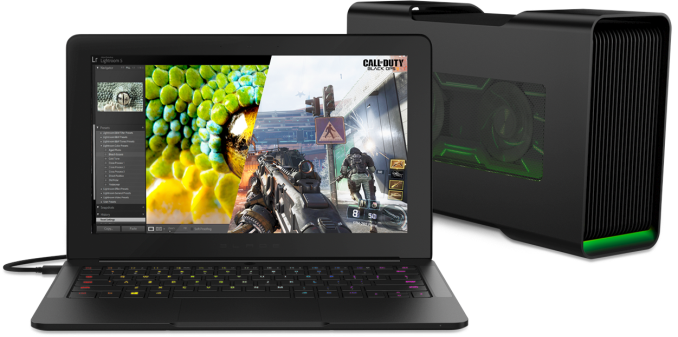
One of the things that Razer wamts to do is to expand in Asia. At present half of the company’s revenue comes from the U.S., the remainder is split between Asia and Europe. Since the Asian/APAC market is very large and has a high potential, the company has good chances to increase its revenue, particularly in countries like China and Taiwan.
Another potential area for growth is gaming PCs. In 2016, the company generated 76.2% ($298.8 million) of its revenue from gaming peripherals, whereas PCs accounted for only 23.1% ($90.1 million). Owners of Razer’s mice and keyboards tend to be loyal customers and if the firm manages to offer them the right computers, they could bite, driving Razer’s revenues up. More recently Razer jumped into services and digital currency businesses, but have yet to become significant revenue sources for the balance sheet.
Wrapping things up, it is evident that Razer is growing fast as a result of overall industry trends, as well as competitive products and brand recognition. With additional funding, the company could unlock more growth opportunities, but Razer is tight-lipped what it plans to do with the IPO.
Related Reading- Razer Announces Project Ariana: Chroma Lighting Comes To The Room, And To Third Parties
- Razer Reveals Their Triple Monitor Gaming Laptop Concept: Project Valerie
- Razer Acquires Majority Of THX Ltd Assets
- Razer Updates The Razer Blade Stealth: More Screen, Less Bezel, New Color Option
- Razer Launches The Thresher Ultimate: An Xbox, PS4, And PC 7.1 Headset
- Razer Announces The Lancehead Gaming Mice
- Razer Updates The Razer Blade Pro With THX Certification
More...
-
07-10-17, 07:52 PM #7145
Anandtech: Oculus Announces Six Week Sale of $399 Rift + Touch Bundle
In the spirit of summer sales and their own “Summer of Rift,” Facebook subsidiary Oculus VR has announced that the Rift + Touch bundle is now on sale for $399. The bundle includes the headset, a pair of Touch controllers, two sensors, an Xbox One wireless controller, a remote, and cables, including connectors for Rock Band VR guitar controllers.
Oculus also offers seven free games for the Rift: Lucky's Tale, Medium, Toybox, Quill, Dead and Buried, Dragon Front, and Robo Recall. For those lacking Rift-compatible titles, these selections provide a simple way to game on the Rift immediately.
The sale will take place for six weeks and follows the permanent price adjustments in March that cut the Rift + Touch bundle from $798 to $598. This competitively positions the Rift + Touch bundle against the $799 HTC Vive headset/controllers bundle and the $499 Sony PlayStation VR headset/controllers bundle. As it stands, Rift’s shipments, cumulatively as well as for 2017 Q1, lag behind the Vive’s according to SuperData, while both are behind the PSVR; at the top of the heap is the more affordable Oculus-powered Samsung Gear VR.
According to Fortune, Oculus vice president of content Jason Rubin stated that “This is a good time to test a mass-market price,” where Oculus is considering whether to permanently drop the price. If so, the Rift would finally arrive at the “$350 ballpark” that was originally targeted. As PC-based high-end VR devices, both the Rift and Vive require VR-capable computers, which carry a hefty price of their own.
As a reminder, Oculus offers the following recommended and minimum PC specifications to power Rift:
On the HTC side of matters, a new Google Daydream supported Vive was announced only a few months ago, aimed at a 2017 release. Pricing was not revealed at that time.Oculus Rift PC Specifications Recommended Minimum CPU Intel i5-4590 / AMD Ryzen 5 1500X Intel i3-6100 / AMD Ryzen 3 1200, FX4350 GPU (AMD) AMD Radeon RX 480 / R9 290 AMD Radeon RX 470 / R9 290 GPU (NVIDIA) NVIDIA GeForce GTX 1060 / 970 NVIDIA GeForce GTX 1050Ti / 960 Memory 8GB+ RAM Video Output HDMI 1.3 USB Ports 3 x USB 3.0
1 x USB 2.01 x USB 3.0
2 x USB 2.0OS Windows 7 SP1 64 bit or newer Windows 8.1 or newer
Time will tell how much the Rift's bundle sale will help bring high-end VR to the masses.
Related Reading- Oculus Rift Launch Day News: New AMD & NVIDIA Drivers; Async Timewarp & Platform Restrictions Added To SDK
- Hands On With the Retail Oculus Rift: Countdown to Launch
- Oculus Touch Controllers Shipping In December for $199
- HTC & Intel Partner on WiGig Wireless for Vive VR Headset
- GDC 2017 Roundup: VR for All - Pico Neo CV, Tobii, & HTC
- Basemark Releases VRScore, a VR & VR Headset Benchmark Suite for Windows
More...
-
07-10-17, 11:36 PM #7146
Anandtech: AMD Releases Radeon Software Crimson ReLive Edition 17.7.1
After the release of Radeon Software Crimson ReLive Edition 17.6.1 and a follow-up bugfix in the form of 17.6.2, AMD has brought a new major driver update with Crimson ReLive Edition 17.7.1. The latest driver adds support for mining cards and fixes for several games & applications.
In light of the now official AMD Radeon RX 470 based mining cards, 17.7.1 (Driver Version 17.10.3211.1031, Windows Driver Store Version 22.19.171.1024). brings support for Radeon RX 460 and 470 based mining cards. While no RX 460 based mining card has been announced, this driver update suggests that such cards exist or are being prepared. In addition, 17.7.1 adds official support for RX 550 and 560 graphics cards, which were originally launched in April. Unlike the RX 580 and 570, the RX 560 and 550 house different GPUs from their RX 400 series counterparts: the RX 560 is powered by a fully-enabled configuration of Polaris 11 that was only previously seen in laptops such as the MacBook Pro, whereas the RX 550 is powered by Polaris 12, a GPU not seen at all previously.
Moving on to bug fixes, AMD has resolved an issue causing crashes with Adobe Lightroom CC 2015.10. AMD has also fixed game-crashing bugs affecting RX 300 series cards running Final Fantasy XIV and Little Nightmares, and R9 380 series cards running Tekken 7.
As a final note: 17.7.1 is not applicable for Radeon Vega Frontier Edition; the inaugural driver, revision number 17.6 (also referred to as Radeon Vega Frontier Edition 17.20) remains the most up-to-date.
The updated drivers for AMD’s desktop, mobile, and integrated GPUs are available through the Radeon Settings tab or online at the AMD driver download page. More information on this update and further issues can be found in the Radeon Software Crimson ReLive Edition 17.7.1 release notes.
More...
-
07-11-17, 08:34 AM #7147
Anandtech: Netgear Launches Nighthawk X4S AC3200 DOCSIS 3.1 Cable Modem Router
?The 2017 CES saw various vendors introduce their first cable modem based on Broadcom's DOCSIS 3.1 BCM3390 chipset. Netgear's CM1000 was one of the first out of the gate, though it didn't come with future-proof features such as the dual Ethernet ports in the Linksys CM3132.
Today, Netgear is launching the CM7800 cable modem router (being marketed under the Nighthawk X4S tag) based on the same platform as the CM1000. I won't go into the details of DOCSIS 3.1 and its advantages (already covered in the CM1000 launch article). The router and network processor segment is more interesting. Based on the AC3200 specifications, the CM7800 appears to be heavily based on the Broadcom BCM93390 reference design (PDF) where the BCM3390 itself is the network processor with the integrated switch, and the Wi-Fi features enabled by the BCM4366 4x4 802.11ac Wave 2 radio. The BCM3390 integrates a 1.5 GHz dual-core processor. The BCM4366 has the proprietary QAM extensions to enable up to 550 Mbps for each 5 GHz spatial stream and up to 250 Mbps for each 2.4 GHz one (hence, the AC3200 tag). The CM1000, as mentioned earlier, is limited to 1 Gbps practically even if the ISP supports, say, 2 Gbps. However, the CM7800's integrated switch ensures that the unit can support 1 Gbps+ speeds to the coax link (assuming ISP support) using just the wired LAN ports.
Netgear's differentiating aspects include the unique active antennae that moves some power amplifiers from the main board to the antennae in order to alleviate interference and simplify board design, while delivering better performance. Like other Netgear router products, the CM7800 also supports the Netgear Genie app, ReadySHARE USB, and ReadySHARE Vault features . The ReadySHARE features enable a USB drive attached to the CM7800 to act as a central backup destination.
The big growth in the Wi-Fi market has been in the area of whole-home Wi-Fi systems and mesh kits. For power users who need to make their Wi-Fi signals cover significant area, I would recommend a modem, a unified security gateway, a PoE switch, and a suitable number of Wi-Fi access points. However, such a solution is not for everybody. The most common configuration amongst people who don't use the cable ISP's supplied gateway is to use a discrete cable modem and a Wi-Fi router. This is logical, given that cable modem standards change at a much slower pace compared to Wi-Fi standards. The mesh kits also fit into that particular scenario. However, there are many cases (such as apartment units and relatively small houses) where a compact system that cuts down on the number of discrete units is preferable. Devices such as the CM7800 target that market segment. The CM7800 will be available for purchase this month, and will have a MSRP of $400.
In other Netgear product news, the Nighthawk X6S AC4000 router (R8000P) was launched late last month. This is an update to the first Broadcom 5G Wi-Fi product - the R8000 Nighthawk X6. Netgear's slide deck provides a helpful comparison between the two.
Netgear will continue to sell both units in the market. The Nighthawk X6S adopts a 64-bit Linux kernel, thanks to the use of the BCM4908 router SoC. The router is available for purchase on Amazon today.
More...
-
07-11-17, 09:41 AM #7148
Anandtech: Intel's Data Center Event Live Blog (8:30am PT)
Today Intel is running an event announcing the latest developments in their data center business. We're ready to live blog the registration-only event, and expect to see Navin Shenoy, Intel’s EVP and GM of the Data Center Group (DCG), and Lisa Spelman, DCG’s VP of Products and Marketing on stage.
More...
-
07-11-17, 12:46 PM #7149
Anandtech: Sizing Up Servers: Intel's Skylake-SP Xeon versus AMD's EPYC 7000 - The Se
This morning kicks off a very interesting time in the world of server-grade CPUs. Officially launching today is Intel's latest generation of Xeon processors, based on the "Skylake-SP" architecture. Part of Intel's new Xeon Scalable Processor family, the "Purley" 100-series processors incorporate all of Intel's latest CPU and network fabric technology, not to mention a very large number of cores.
Meanwhile, a couple of weeks back AMD soft-launched their new EPYC 7000 series processors. Based on the company's Zen architecture and scaled up to server-grade I/O and core counts, EPYC represents an epic achievement for AMD, once again putting them into the running for competitive, high-performance server CPUs after nearly half a decade gone. EPYC processors have begun shipping, and just in time for today's Xeon launch, we also have EPYC hardware in the lab to test.
Today's launch is a situation that neither company has been in for quite a while. Intel hasn't had serious competition in years, and AMD hasn't been able to compete. As a result, both companies are taking the other's actions very seriously.
In fact we could go on for much longer than our quip above in describing the rising tension at the headquarters of AMD and Intel. For the first time in 6 years (!), a credible alternative is available for the newly launched Xeon. Indeed, the new Xeon "Skylake-SP" is launching today, and the yardstick for it is not the previous Xeon (E5 version 4), but rather AMD's spanking new EPYC server CPU. Both CPUs are without a doubt very different: micro-architecture, ISA extentions, memory subsystem, node topology... you name it. The end result is that once again we have the thrilling task of finding out how the processors compare and which applications their various trade-offs make sense.
More...
-
07-11-17, 05:30 PM #7150
Anandtech: AMD Announces AMD4U Promotional Bundle with Square Enix and Adobe
In collaboration with Square Enix and Adobe, AMD has announced their new AMD4U promotion, bundling indie games and creative software trials with eligible AMD-powered systems. AMD says that this campaign highlights their recently released Ryzen processors and Radeon RX 500 series graphics cards, putting the focus on content creators and gamers.
This bundle only applies to systems purchased through qualifying OEMs and system builders, and depending on the CPU/APU or discrete graphics powering the system, may include up to three free Square Enix Collective games and/or a 2-month Adobe Creative Cloud subscription or a 3-month Adobe Creative Cloud Photography plan subscription.
Square Enix Collective is essentially an indie game development/incubation/spotlight platform curated by Square Enix, where creators can post ideas that are voted in turn by gamers. Successful pitches may receive additional support in the form of Square Enix assisted Kickstarter crowdfunding. 10 Square Enix Collective game titles are included in this AMD4U promotion: The Turing Test, Goetia, Oh My Godheads, Children of Zodiarcs, Black the Fall, Tokyo Dark, Forgotten Anne, Deadbeat Heroes, Battalion 1944, and Fear Effect Sedna. At the moment, only The Turing Test, Goetia, and Oh My Godheads are released, so for participants who choose other titles, a key code will be made available as soon as the game is released.
The Adobe Creative Cloud software usually operates by monthly subscription model, so the complimentary subscriptions are not as atypical as they appear, but at only 2-3 months are closer to extended trials than free software. Adobe Creative Cloud is the full CC suite with more than 20 applications, while the Creative Cloud Photography plan includes Lightroom CC and Photoshop CC desktop applications, as well as a slew of mobile apps.
The promotion will run for the rest of the 2017 year, and applies for systems purchased as early as June 12th, 2017. Key codes will expire after 2017 as well. Note that Adobe Software may not be available in countries outside the United States.
System eligibility/reward details and redemption instructions can be found at the AMD4U Promo site. For reference, AMD offers the following chart to determine eligibility:
More...
Thread Information
Users Browsing this Thread
There are currently 23 users browsing this thread. (0 members and 23 guests)





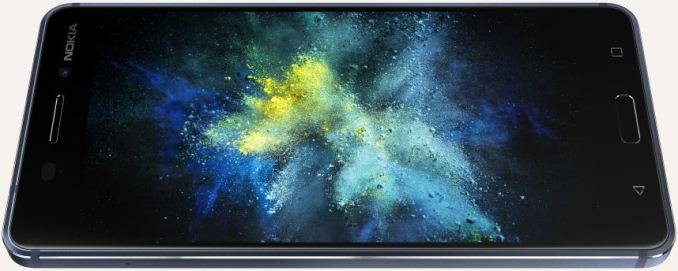
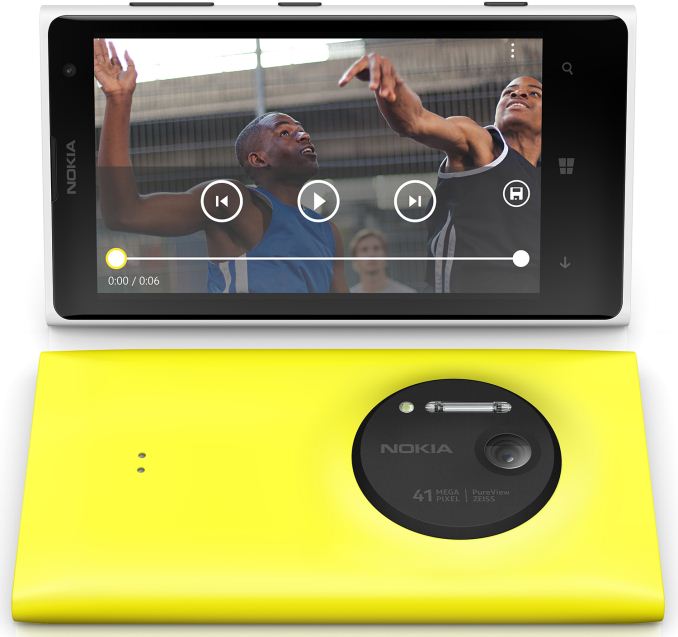

 Quote
Quote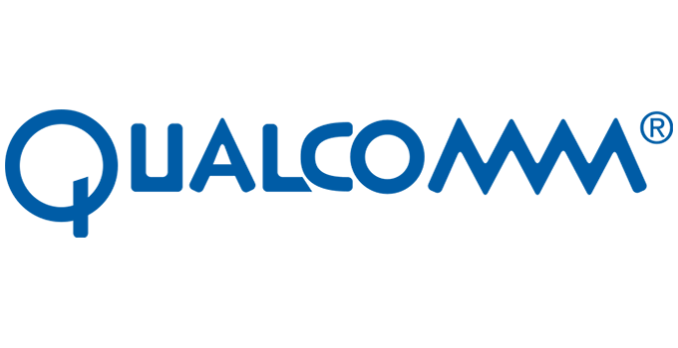
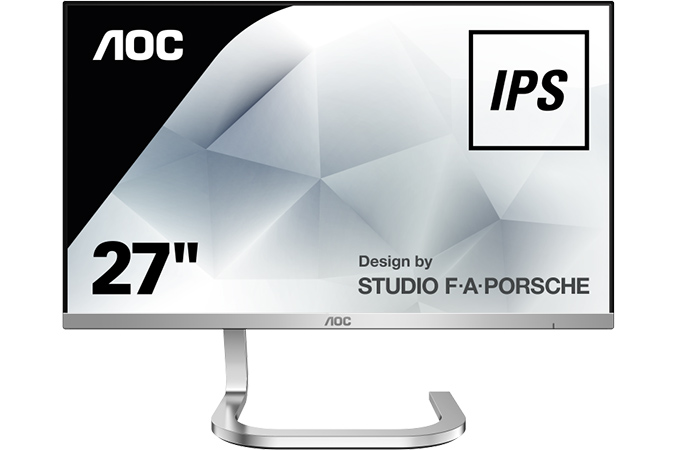
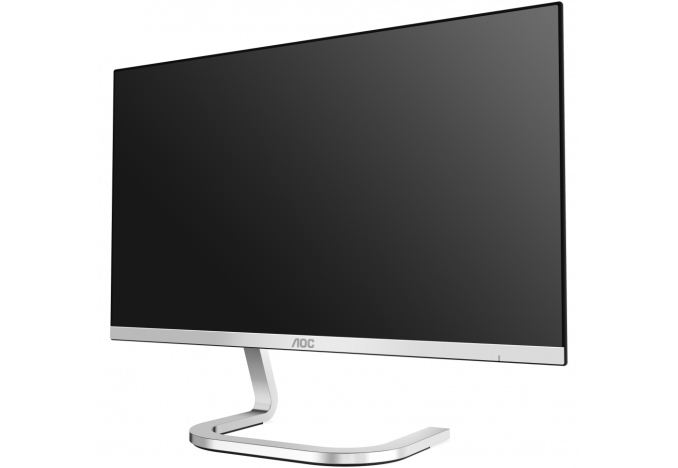
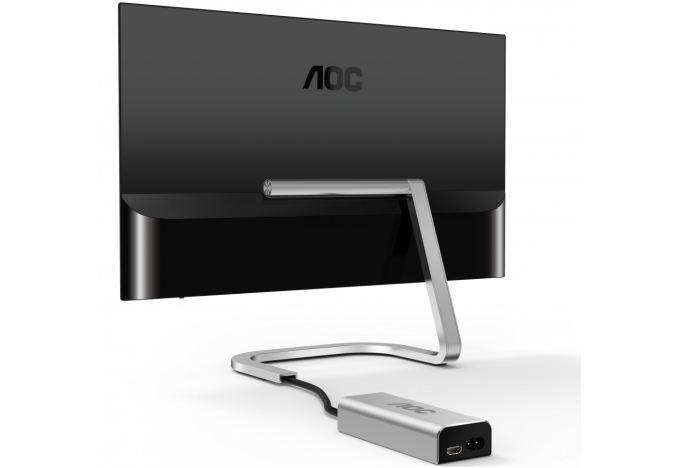
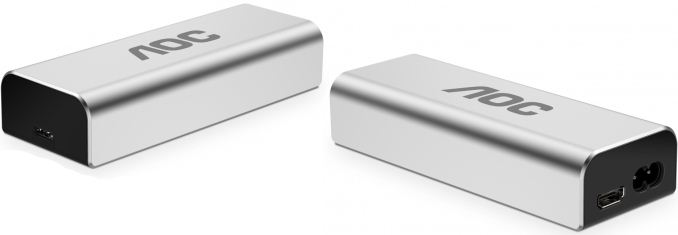

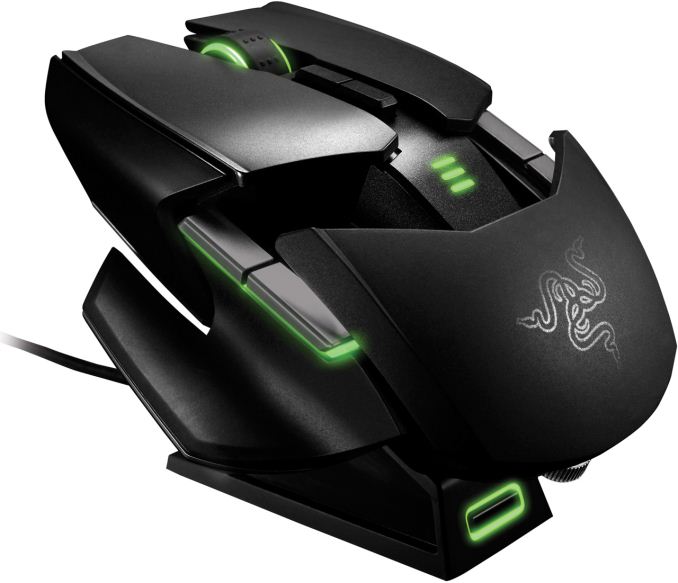
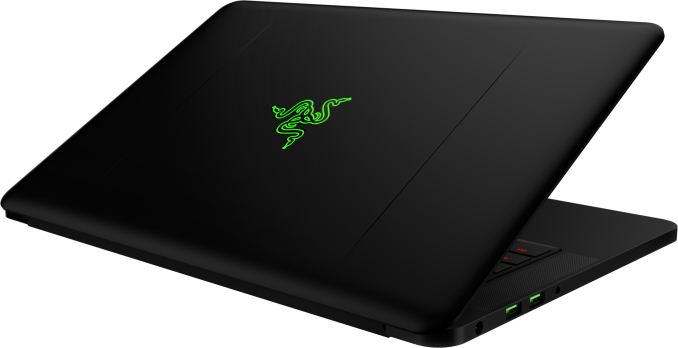
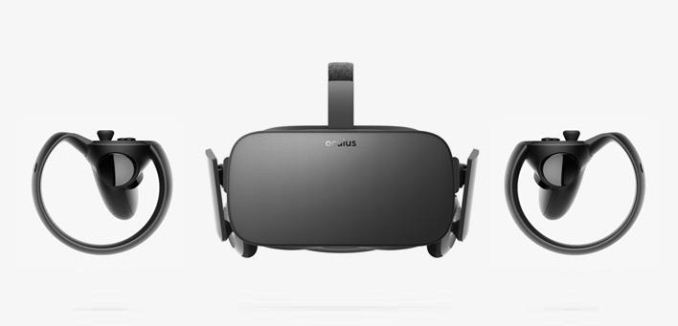


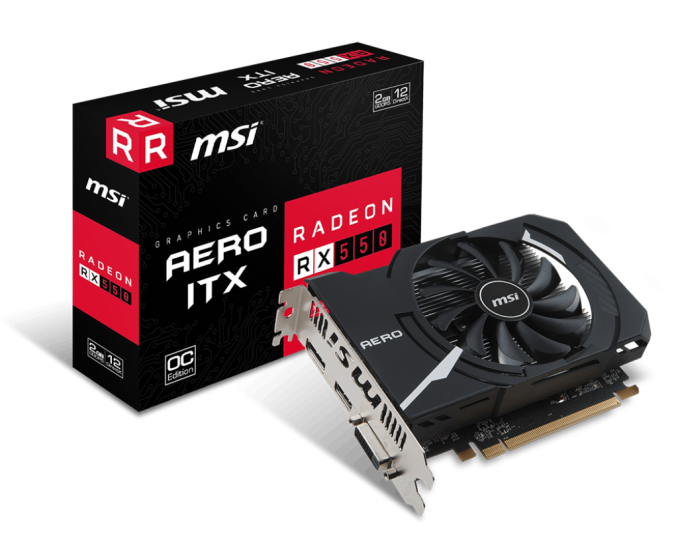

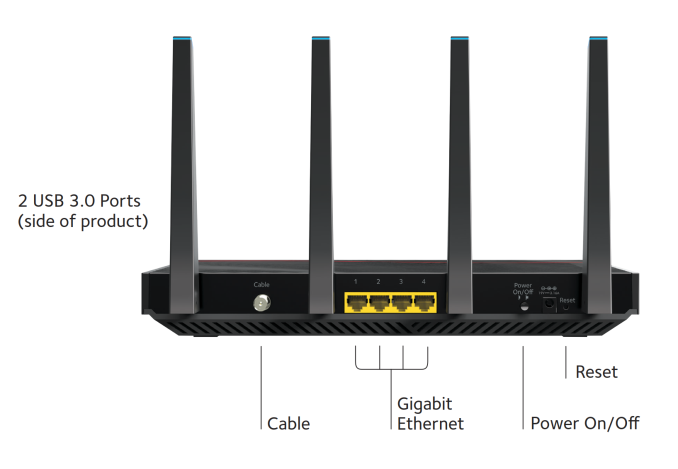
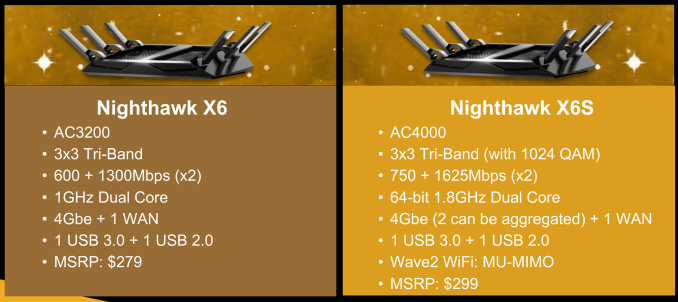

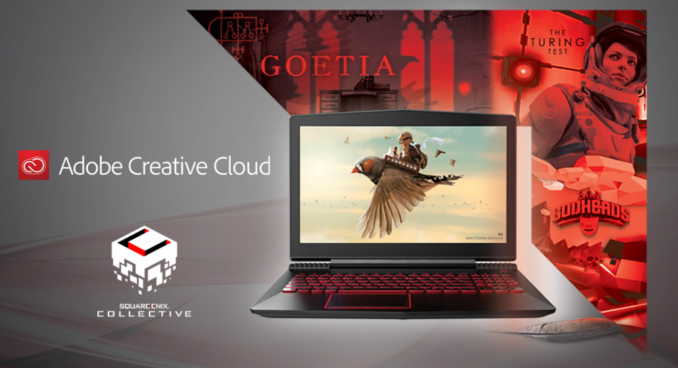
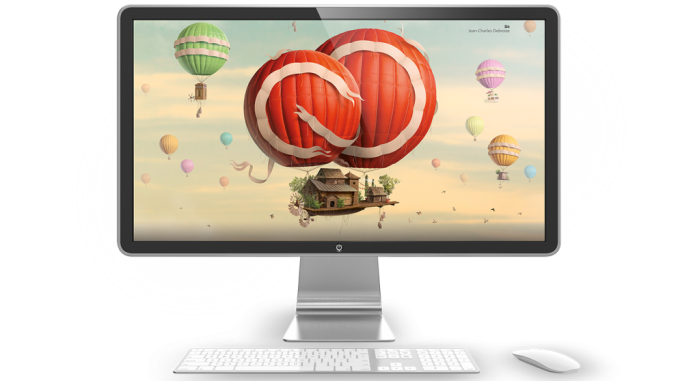
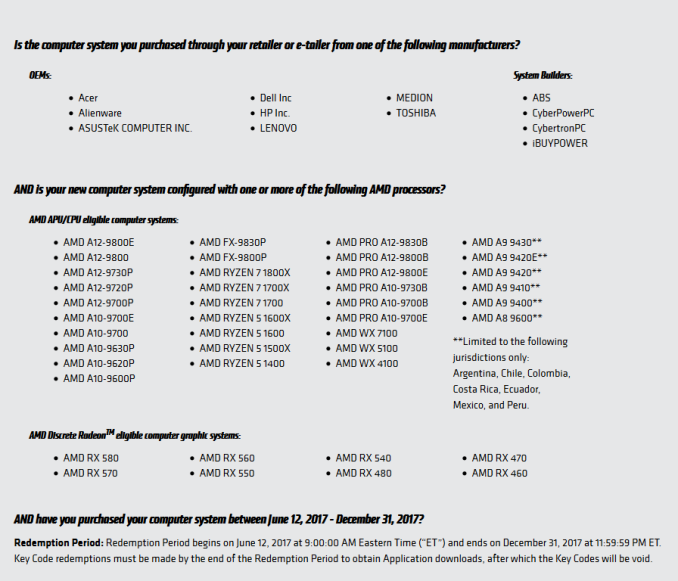
















Bookmarks